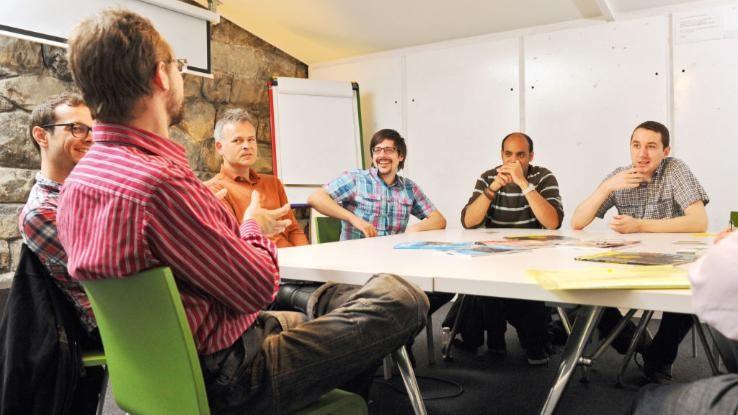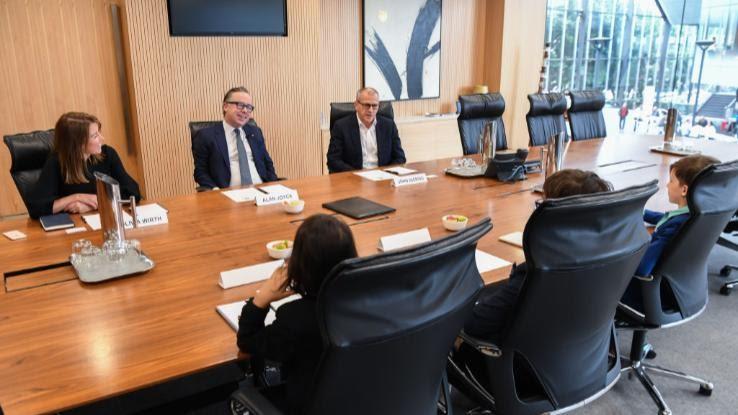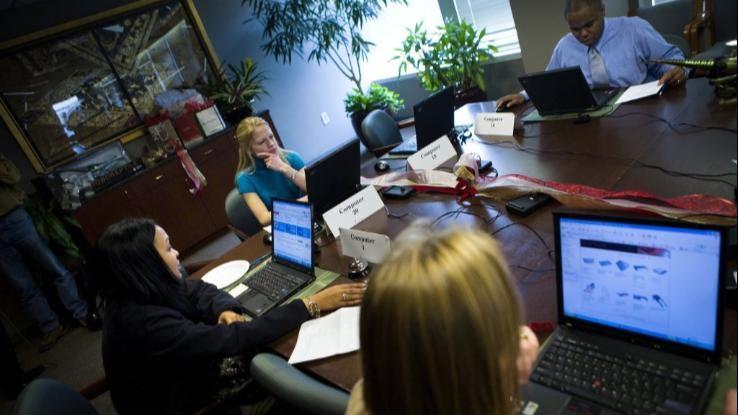How To Assign Formal Charge

Whether you enjoy their social aspect or think they tend to run too long, meetings are ane way that things get washed. But not all meetings are created every bit, and there are differences between two of the main types: formal and informal meetings. Understanding the differences can make your meetings more constructive and even boost attendance in the process.
Some of the differences between formal and breezy meetings are easy to spot. There are variations in formats, participant sizes, fourth dimension spans, locations and structures that a coming together tin take. In examining the telescopic of meeting formats, it's important to empathize how they're different and how they're the same.
Formal Coming together
Formal meetings are common and have potent structures and protocols in place, so they're considered more anticipated. They have written agendas, which are typically delivered to participants beforehand, and may have strict formats regarding who volition speak, how long people volition speak and what the protocols are for responding.

Most formal meetings besides have a notetaker to certificate who attended and what happened, creating a record of the meeting. Some higher-level formal meetings may fifty-fifty be recorded for public distribution or to create records groups can refer to if there are questions nigh proceedings afterward the meeting has concluded.
Formal meetings may also have a construction in place to manage conversations and the decision-making process. There may be whiteboards for writing down ideas that participants don't have time to explore. There as well may be breakout sessions during which small groups plan a section of the activeness and then report results or findings back to the larger grouping.
Although in that location are some exceptions, formal meetings are unremarkably pre-scheduled and participants are notified in advance about where they need to be and when they demand to be at that place. Some of the most formal meetings — including municipal meetings for metropolis and state governments or board of directors meetings for businesses and nonprofit organizations — may also follow a very specific format for proceedings. I case of this blazon of meeting format is Robert'south Rules of Order.
Informal meetings don't have the same kinds of rules and formats; they're looser. Usually, though not always, they're smaller. They can take place in a multifariousness of venues, whether that's someone's living room, a suspension room at work, someone's larger part or even someone'southward desk in a cubicle. They can fifty-fifty take place at a eating place during a quick tiffin or at a bar after work.

Just as the coming together locations are flexible, the process for notifying participants about an breezy meeting as well spans a wide range of possibilities. Some notifications tin can happen through interoffice messaging systems or as one participant walks around an office, talking to people virtually what'south needed and setting a time and identify along the way. Other times, a chat can evolve into a meeting, or an breezy meeting tin follow after a more formal meeting has concluded. This "coming together after the coming together" approach can help participants process what'south just happened and build a stronger sense of teamwork, merely it's important to be sure that participants at the bigger meeting aren't accidentally excluded from this smaller gathering.
Still, other characteristics distinguish informal meetings from their formal counterparts. One of these centers around the way that information flows. In informal meetings, in that location aren't agendas, participants with strictly designated roles or specifically defined speaking times. People speak freely, and at that place may be more room for brainstorming and creativity in trouble-solving processes.
Formal and Informal Meeting Characteristics
Despite their differences, there's a number of characteristics that both formal and breezy meetings take in common. First, at formal and informal meetings, it's typically a smart thought to have someone taking notes. These can be distributed after the fact and go on everyone on the same page regarding tasks going forward and the followup to ensure that those tasks are completed. They help guide the coming together towards productivity and get in easier to determine the means the meeting was a adept utilise of everyone'due south time.

In all meetings, it's also important that participants have the risk to speak uninterrupted, that there'south a level of respect amidst all participants and that everyone has the chance to ask questions or answer to what's existence said. If needed, meetings can have someone designated as both a timekeeper and a moderator to make certain communication stays both clear and civil. If this role is necessary, it'll probable be assigned ahead of time in a formal coming together, merely it may happen based on natural leadership tendencies and group dynamics in an breezy meeting.
Another feature of both meetings, and perhaps the almost human ane, is that there'due south i thing that makes whatever kind of meeting improve: having food. Whether it'due south a serious and formal board of directors meeting or a grouping of individuals gathered together in someone'southward home to program a party, more than people are likely to attend and be productive if in that location are things to sip and munch on. Unless at that place's a reason not to have nutrient — such as hosting a municipal meeting in a location where food isn't allowed — a meeting planner should consider providing snacks in advance, even if it's only a few drink options.
The fourth characteristic shared betwixt both coming together styles is that it makes sense to cull the format deliberately and intentionally. How do y'all know what kind of meeting to hold? Many times, if in that location's a large number of participants who need to share data, if a coming together needs to be documented for the public record or if some participants' approaches to a work chore may exist at odds with others' views, the more rigid structure of a formal coming together may exist beneficial. On the other manus, if merely a few people need to process something that happened at piece of work or need to ask a few supplemental questions, this could be easier to attain using a more flexible meeting structure.
Perhaps the largest defining characteristic of any kind of a meeting is its goal: to get things accomplished. This is often what most people want out of a coming together, and when information technology doesn't happen, it'due south what makes people regret that they had to spend time attention.
How To Assign Formal Charge,
Source: https://www.reference.com/business-finance/difference-between-formal-informal-meetings-22757f6fdcf1281c?utm_content=params%3Ao%3D740005%26ad%3DdirN%26qo%3DserpIndex&ueid=ffb81d19-f8b9-4d45-b345-c6b0edafd062
Posted by: mirelesbobst1939.blogspot.com


0 Response to "How To Assign Formal Charge"
Post a Comment